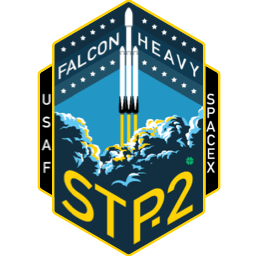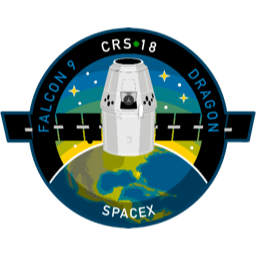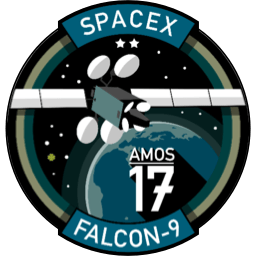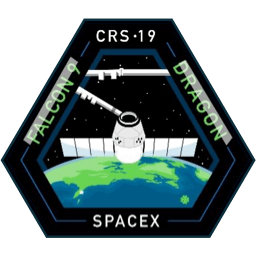| 81 |  | STP-2 | Tue Jun 25 2019 | Successful 🚀 | Space Test Program 2 is a rideshare managed by the U.S. Air Force Space and Missile Systems Center (SMC), launching from LC-39A, KSC. Most of the spacecraft will be delivered into low Earth orbit (LEO) in two deployment sequences separated by a second stage burn. These LEO payloads include the six Taiwan and United States owned COSMIC-2 microsatellites, the Planetary Society's LightSail-B demonstrator cubesat, and others. The third and final deployment will be the Air Force Research Lab's DSX spacecraft, which will be delivered to a medium Earth orbit (MEO). This mission will reuse the side cores from Arabsat 6A, which will return to LZ-1, and LZ-2. The new center core will boost back to land on OCISLY less than 40 km from the launch site. | Kennedy Space Center Historic Launch Complex 39A | 🔍 Details |
| 82 |  | CRS-18 | Thu Jul 25 2019 | Successful 🚀 | SpaceX's 18th Commercial Resupply Services mission out of a total of 20 such contracted flights for NASA, this launch will deliver essential supplies to the International Space Station using the reusable Dragon 1 cargo spacecraft. The external payload for this mission is International Docking Adapter 3, replacing IDA-1 lost in SpaceX's CRS-7 launch failure. This mission will launch from SLC-40 at Cape Canaveral AFS on a Falcon 9, and the first-stage booster is expected to land back at CCAFS LZ-1. | Cape Canaveral Space Force Station Space Launch Complex 40 | 🔍 Details |
| 83 |  | Amos-17 | Tue Aug 06 2019 | Successful 🚀 | SpaceX will launch Boeing built Amos-17, a geostationary communications satellite for Israeli company Spacecom. The satellite will be delivered to GTO from KSC LC-39A or possibly CCAFS SLC-40, and will replace the defunct Amos-5 at 17° E. Amos-17 carries multi-band high throughput and regional beams servicing Africa, Europe and the Middle East. The cost of this launch is covered for Spacecom by SpaceX credit following the Amos-6 incident. A recovery of the booster for this mission is not expected. | Cape Canaveral Space Force Station Space Launch Complex 40 | 🔍 Details |
| 84 |  | Starlink-1 | Mon Nov 11 2019 | Successful 🚀 | This mission will launch the first batch of Starlink version 1.0 satellites, from SLC-40, Cape Canaveral AFS. They are expected to contribute to the 550 km x 53° shell. It is the second Starlink launch overall. Starlink is a low Earth orbit broadband internet constellation developed and owned by SpaceX which will eventually consist of nearly 12 000 satellites and will provide low latency internet service to ground terminals around the world. The booster for this mission is expected to land on OCISLY. | Cape Canaveral Space Force Station Space Launch Complex 40 | 🔍 Details |
| 85 |  | CRS-19 | Thu Dec 05 2019 | Successful 🚀 | SpaceX's 19th Crew Resupply Mission on behalf of NASA with a total of 20 contracted flights, this mission brings essential supplies to the International Space Station using SpaceX's reusable Dragon spacecraft. The external payloads for this mission include the Hyperspectral Imager Suite and a lithium-ion battery. Falcon 9 and Dragon will launch from SLC-40, Cape Canaveral AFS. The mission will be complete with return and recovery of the Dragon capsule and down cargo. | Cape Canaveral Space Force Station Space Launch Complex 40 | 🔍 Details |
| 86 |  | JCSat 18 / Kacific 1 | Tue Dec 17 2019 | Successful 🚀 | SpaceX will launch the Boeing built dual payload satellite to geostationary transfer orbit from XXXX. JCSat 18 is a mobile broadband communications payload built for Sky Perfect JSAT Corporation of Japan and will service Asia Pacific. Kacific 1 is a high throughput broadband internet payload built for Kacific Broadband Satellites and will service certain high demand areas of Southeast Asia and the Pacific. Both payloads share a single chassis. The booster for this mission is expected to land on OCISLY. | Cape Canaveral Space Force Station Space Launch Complex 40 | 🔍 Details |
| 87 |  | Starlink-2 | Tue Jan 07 2020 | Successful 🚀 | This mission will launch the second batch of Starlink version 1.0 satellites, from SLC-40, Cape Canaveral AFS. They are expected to contribute to the 550 km x 53° shell. It is the third Starlink launch overall. Starlink is a low Earth orbit broadband internet constellation developed and owned by SpaceX which will eventually consist of nearly 12 000 satellites and will provide low latency internet service to ground terminals around the world. The booster for this mission is expected to land on OCISLY. | Cape Canaveral Space Force Station Space Launch Complex 40 | 🔍 Details |
| 88 |  | Crew Dragon In Flight Abort Test | Sun Jan 19 2020 | Successful 🚀 | SpaceX will launch a Crew Dragon capsule from LC-39A, KSC on a fully fueled Falcon 9 rocket and then trigger the launch escape system during the period of maximum dynamic pressure. As part of NASA'a Commercial Crew Integrated Capability program (CCiCap) this test will contribute valuable data to help validate Crew Dragon and its launch abort system. The Crew Dragon will be recovered by GO Searcher after splashdown in the Atlantic Ocean. This flight does not go to orbit. The booster and upper stage are expected to break up following capsule separation and there will be no landing attempt. | Kennedy Space Center Historic Launch Complex 39A | 🔍 Details |
| 89 |  | Starlink-3 | Wed Jan 29 2020 | Successful 🚀 | This mission will launch the third batch of Starlink version 1.0 satellites, from SLC-40, Cape Canaveral AFS. It is the fourth Starlink launch overall. The satellites will be delivered to low Earth orbit and will spend a few weeks maneuvering to their operational altitude of 550 km. The booster for this mission is expected to land on OCISLY. | Cape Canaveral Space Force Station Space Launch Complex 40 | 🔍 Details |
| 90 |  | Starlink-4 | Mon Feb 17 2020 | Successful 🚀 | This mission will launch the fourth batch of Starlink version 1.0 satellites, from SLC-40, Cape Canaveral AFS. It is the fifth Starlink launch overall. The satellites will be delivered to low Earth orbit and will spend a few weeks maneuvering to their operational altitude of 550 km. The booster for this mission is expected to land on OCISLY. | Cape Canaveral Space Force Station Space Launch Complex 40 | 🔍 Details |









